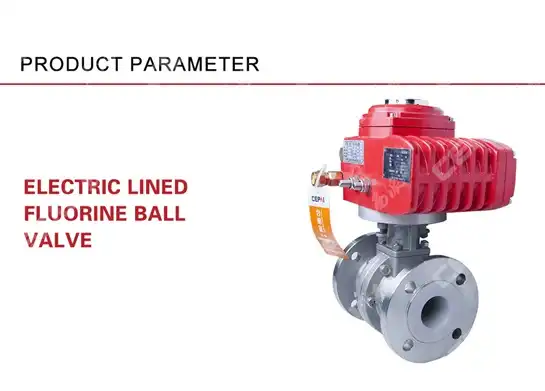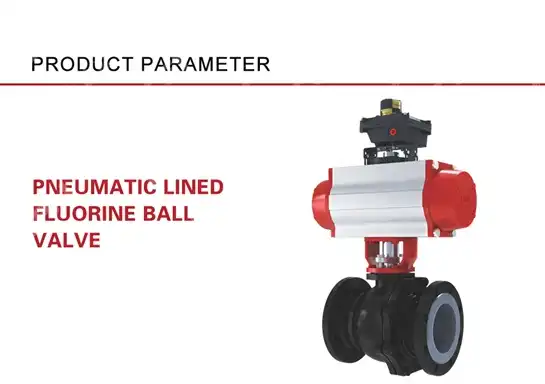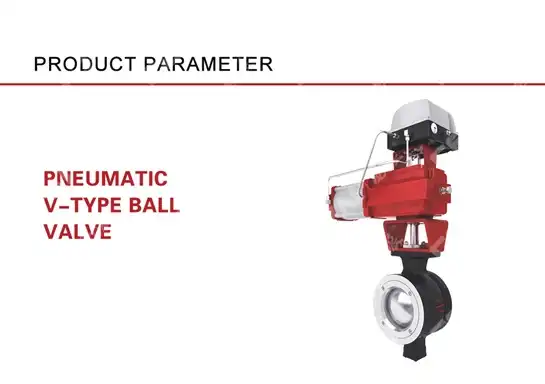Can Electric Ball Valves Handle Extreme Pressure and Heat Safely?
Picture a petrochemical plant where a valve failure at high temperatures and pressures could lead to catastrophic consequences—equipment damage, production shutdown, or worse, safety hazards threatening your entire operation. This nightmare scenario keeps plant managers awake at night, but modern Electric Ball Valve technology offers a solution. Yes, electric ball valves can handle extreme pressure and heat safely when properly engineered with advanced materials, precision sealing systems, and robust actuator mechanisms designed specifically for harsh industrial environments.

Understanding Electric Ball Valve Pressure and Temperature Ratings
Modern Electric Ball Valve systems are engineered to withstand demanding operational conditions that would compromise standard valve configurations. The pressure handling capability of these valves depends on several critical factors including material composition, seat design, and body construction. Industrial-grade electric ball valves can manage pressures ranging from moderate levels up to 500 bar in steel hydraulic configurations, making them suitable for high-pressure applications across petrochemical, power generation, and oil and gas sectors. Temperature tolerance represents another crucial performance parameter. Electric Ball Valve assemblies designed for extreme thermal environments typically feature specialized materials that maintain structural integrity and sealing effectiveness at elevated temperatures. Stainless steel grades such as 316, 321, or 347 provide exceptional heat resistance, while advanced seat materials ensure reliable shutoff even when exposed to temperatures exceeding 200°C. The combination of heat-resistant construction and precision-engineered sealing mechanisms enables these valves to function reliably where conventional valve technologies fail.
-
Material Selection for Extreme Conditions
The foundation of safe high-pressure, high-temperature Electric Ball Valve operation lies in strategic material selection. Valve body materials must resist thermal expansion, corrosion, and mechanical stress simultaneously. Stainless steel alloys offer superior performance in corrosive environments, while carbon steel variants provide cost-effective solutions for less demanding applications. The ball element itself requires materials with low friction coefficients and high hardness to prevent wear during repeated cycling operations. Sealing components present unique engineering challenges in extreme environments. Traditional elastomeric seals degrade rapidly at elevated temperatures, necessitating the use of modified PTFE compounds, graphite-based packings, or metal-to-metal sealing configurations. These advanced sealing materials maintain their functional properties across wide temperature ranges while providing zero-leakage performance critical to process safety and environmental compliance. The selection of appropriate seal materials directly impacts the long-term reliability and maintenance requirements of Electric Ball Valve installations.
-
Dual Sealing Systems and Safety Features
Contemporary Electric Ball Valve designs incorporate sophisticated dual sealing architectures that combine dynamic and static sealing elements. This redundant approach ensures continued operation even if the primary seal experiences degradation. The dynamic seal accommodates valve movement during operation, while the static seal provides backup protection during closed positions. This layered defense strategy significantly enhances safety margins in critical applications where valve failure could result in hazardous material release. Beyond basic sealing, modern Electric Ball Valve assemblies integrate multiple safety features including blowout-proof stem designs, fire-safe configurations, and emergency shutdown capabilities. The electric actuator enables remote operation from control rooms, removing personnel from potentially dangerous proximity to high-pressure, high-temperature process fluids. Automated monitoring systems continuously track valve position, actuator torque, and cycle counts, providing early warning of potential issues before they escalate into safety incidents.
Electric Actuator Performance in Harsh Environments
The electric actuator represents the control heart of modern Electric Ball Valve systems, translating electrical signals into precise mechanical motion. These actuators must deliver consistent torque output across wide temperature ranges while maintaining accurate positioning despite external environmental stresses. High-quality electric actuators feature robust motor assemblies with thermal protection, precision gear trains for mechanical advantage, and weatherproof enclosures rated for hazardous area classifications. Actuator selection requires careful consideration of operating torque requirements, cycle frequency, and environmental exposure conditions. The breakaway torque needed to initiate valve movement from a closed position typically exceeds running torque, particularly in high-pressure applications where differential pressure acts against the ball surface. Electric Ball Valve actuators must provide sufficient torque margin to overcome these forces reliably while avoiding overtorquing that could damage valve components.
-
Remote Control and Smart Monitoring
Modern Electric Ball Valve installations leverage digital communication protocols for integration with distributed control systems. These smart valve assemblies provide real-time feedback on position, diagnostic data, and maintenance alerts. Remote operation capability enhances personnel safety by enabling valve control from protected locations during emergency situations. Advanced systems incorporate predictive maintenance algorithms that analyze operating patterns to forecast component replacement requirements before failures occur. The integration of online condition monitoring transforms Electric Ball Valve assets from passive components into intelligent system elements. Sensors track parameters such as actuator current draw, cycle times, and temperature profiles to identify degradation trends. This data-driven approach enables transition from reactive maintenance strategies to proactive interventions that maximize equipment uptime while minimizing unplanned outages. For facilities operating continuous processes, this capability directly translates to improved profitability and enhanced safety performance.
Application Engineering for Critical Services
Successful Electric Ball Valve deployment in extreme pressure and temperature applications requires comprehensive application engineering. Process conditions including fluid properties, flow rates, pressure drops, and temperature profiles must be thoroughly analyzed to ensure valve specifications align with operational requirements. Critical service applications such as emergency shutdown systems demand additional safety factors and redundant design features beyond standard industrial configurations. Industry-specific certifications validate Electric Ball Valve suitability for demanding applications. API 6A certification confirms compliance with stringent requirements for wellhead and Christmas tree equipment used in oil and gas production. API 6D addresses pipeline valves, while API 602 covers compact steel gate, globe, and check valves. These certifications provide independent verification that valve designs meet rigorous performance and safety standards essential for critical infrastructure protection.
-
Quality Control and Testing Protocols
Manufacturing excellence determines Electric Ball Valve reliability in harsh service conditions. Advanced production facilities employ precision machining centers, automated welding systems, and comprehensive testing protocols to ensure dimensional accuracy and structural integrity. Each valve undergoes pressure testing at levels exceeding maximum rated working pressure to verify leak-tight performance. Seat testing confirms shutoff capability across the full pressure range, while cycle testing validates actuator longevity expectations. Traceability systems track material certifications, manufacturing processes, and test results for every Electric Ball Valve component. This documentation chain enables root cause analysis if field issues emerge while demonstrating compliance with quality management standards. Facilities certified to ISO 9001, ISO 14001, and ISO 45001 maintain systematic approaches to quality assurance, environmental management, and occupational health and safety that minimize production defects and ensure consistent product quality.

Industry Applications and Performance Benefits
Electric Ball Valve technology serves diverse industrial sectors requiring reliable flow control under challenging conditions. Petrochemical facilities utilize these valves for process isolation, emergency shutdown, and flow regulation in systems handling corrosive chemicals at elevated pressures and temperatures. Power generation plants depend on Electric Ball Valve performance for steam, water, and fuel gas control in high-pressure boiler feed systems and turbine applications. Oil and gas production operations represent particularly demanding applications where Electric Ball Valve reliability directly impacts production efficiency and safety. Wellhead equipment must withstand extreme pressures during drilling and completion operations while maintaining zero-leakage performance to prevent environmental contamination. The compact design and rapid actuation capability of electric ball valves make them ideal for offshore platforms where space constraints and remote operation requirements drive equipment selection decisions.
-
Advantages Over Alternative Technologies
Compared to manual ball valves, Electric Ball Valve assemblies offer superior control precision, reduced operating labor, and enhanced safety through remote operation capability. Versus gate valves, ball valves provide faster actuation, better shutoff performance, and lower pressure drops in full-bore configurations. The quarter-turn operating principle minimizes actuator size requirements compared to multi-turn valve technologies, reducing installation costs and maintenance complexity. Electric actuation provides advantages over pneumatic alternatives in applications where compressed air supplies are unavailable or undesirable. Electric Ball Valve systems eliminate concerns about air line freezing in cold climates, moisture contamination affecting pneumatic actuators, and the maintenance burden associated with air compressor infrastructure. The precise positioning capability of electric actuators enables flow throttling applications where pneumatic actuators would struggle to maintain stable intermediate positions.
Conclusion
Electric Ball Valve technology delivers proven performance in extreme pressure and temperature applications through advanced materials, precision engineering, and intelligent control capabilities. These valves provide reliable flow control while enhancing operational safety and enabling remote monitoring that supports predictive maintenance strategies. Investment in quality Electric Ball Valve solutions yields long-term benefits through reduced downtime, lower maintenance costs, and improved process safety.
Cooperate with CEPAI Group Co., LTD.
As a China Electric Ball Valve manufacturer and China Electric Ball Valve supplier, CEPAI Group Co., LTD. delivers High Quality Electric Ball Valve solutions backed by comprehensive certifications including API, ISO, and CE approvals. Our China Electric Ball Valve factory features advanced intelligent manufacturing capabilities with the longest high-precision flexible production line in the Asia Pacific region. Whether you need Electric Ball Valve for sale for petrochemical, power generation, or oil and gas applications, our experienced team provides technical consultation, customized solutions, and ongoing support. Contact our China Electric Ball Valve wholesale division at cepai@cepai.com to discuss your project requirements and receive competitive Electric Ball Valve price quotations. Bookmark this resource for future reference when evaluating flow control solutions for extreme operating conditions.
References
1. American Petroleum Institute, "API 6A: Wellhead and Christmas Tree Equipment," API Publishing Services, 23rd Edition
2. Smith, J.R. and Williams, M.K., "Materials Selection for High-Temperature Valve Applications," Journal of Pressure Vessel Technology, Vol. 142, No. 3
3. International Organization for Standardization, "ISO 5208: Industrial Valves - Pressure Testing of Metallic Valves," ISO Standards Collection
4. Chen, L., "Advanced Sealing Technologies for Extreme Service Ball Valves," Valve World Magazine, Technical Article Series
_1746598557316.webp)
Get professional pre-sales technical consultation and valve selection services, customized solution services.

About CEPAI


